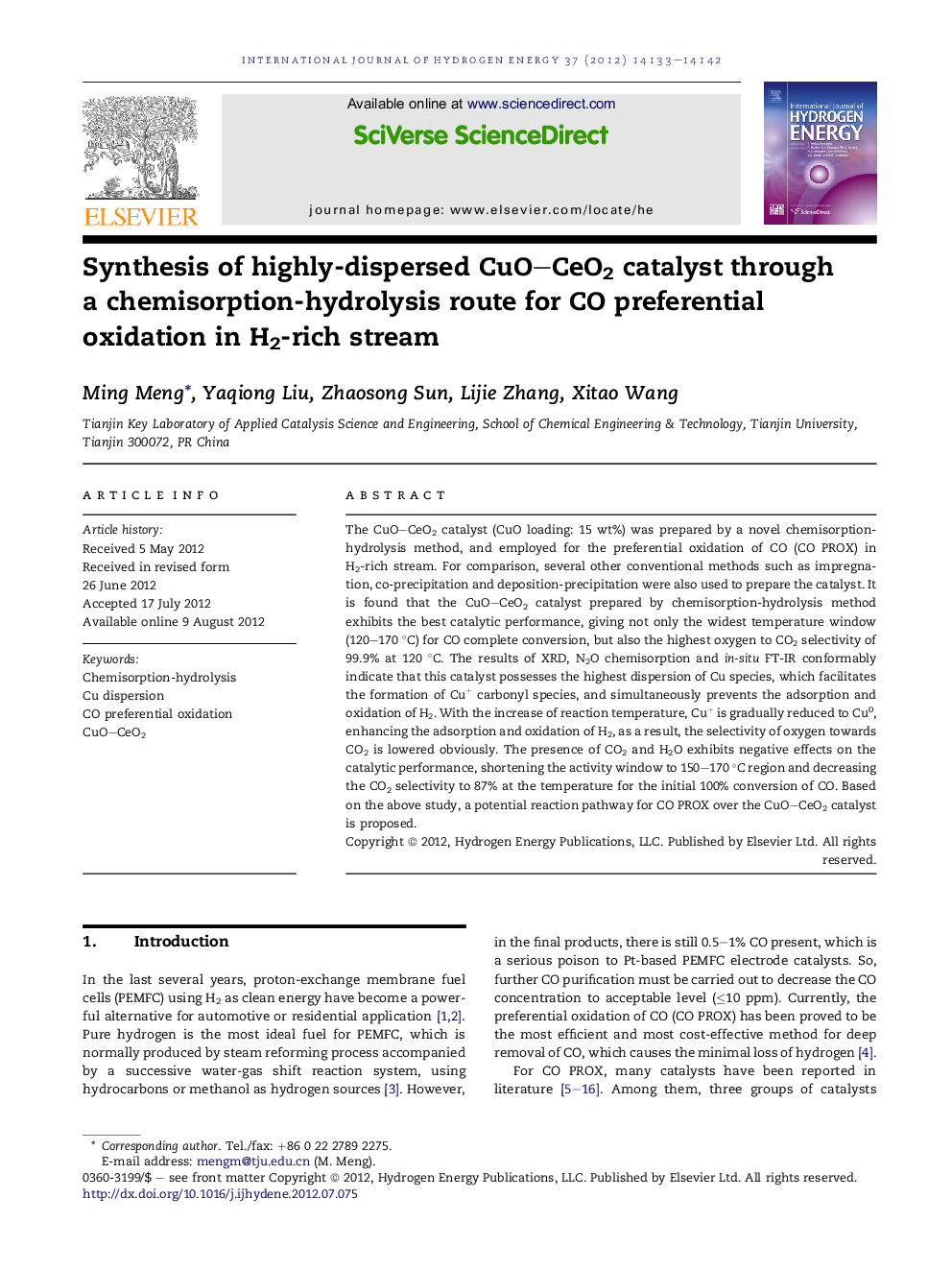| Article ID | Journal | Published Year | Pages | File Type |
|---|---|---|---|---|
| 1274756 | International Journal of Hydrogen Energy | 2012 | 10 Pages |
The CuO–CeO2 catalyst (CuO loading: 15 wt%) was prepared by a novel chemisorption-hydrolysis method, and employed for the preferential oxidation of CO (CO PROX) in H2-rich stream. For comparison, several other conventional methods such as impregnation, co-precipitation and deposition-precipitation were also used to prepare the catalyst. It is found that the CuO–CeO2 catalyst prepared by chemisorption-hydrolysis method exhibits the best catalytic performance, giving not only the widest temperature window (120–170 °C) for CO complete conversion, but also the highest oxygen to CO2 selectivity of 99.9% at 120 °C. The results of XRD, N2O chemisorption and in-situ FT-IR conformably indicate that this catalyst possesses the highest dispersion of Cu species, which facilitates the formation of Cu+ carbonyl species, and simultaneously prevents the adsorption and oxidation of H2. With the increase of reaction temperature, Cu+ is gradually reduced to Cu0, enhancing the adsorption and oxidation of H2, as a result, the selectivity of oxygen towards CO2 is lowered obviously. The presence of CO2 and H2O exhibits negative effects on the catalytic performance, shortening the activity window to 150–170 °C region and decreasing the CO2 selectivity to 87% at the temperature for the initial 100% conversion of CO. Based on the above study, a potential reaction pathway for CO PROX over the CuO–CeO2 catalyst is proposed.
► Chemisorption-hydrolysis is a novel route for synthesizing CuO–CeO2 used for CO PROX. ► Superhigh selectivity (99.9%) of O2 to CO2 is achieved at 120 °C over CuO–CeO2(CH). ► CuO–CeO2(CH) possesses the highest Cu dispersion, increasing O2 to CO2 selectivity. ► Below 120 °C H2 adsorption is totally inhibited by the formation of Cu+–CO species.
